Abstract
The antibacterial activity of a new 7-dimethylpyridinyl quinolone, WIN 57273, was assessed by using in vitro and in vivo models. Agar inclusion and broth dilution in vitro tests revealed broad-spectrum activity against gram-positive and selected gram-negative organisms, with the greatest potency observed against the staphylococci. The MIC for 90% of coagulase-positive strains tested (MIC90) was less than or equal to 0.002 micrograms/ml; for the coagulase-negative strains the MIC90 was 0.008 micrograms/ml. Against enterococci the MIC90 was 0.06 micrograms/ml, with comparable activity observed against group A and group B streptococci as well as against the pneumococci. In general, the MIC90s for the gram-negative bacteria were less than or equal to 1 micrograms/ml. Exceptions were Serratia marcescens (MIC90, 16 micrograms/ml), Citrobacter freundii (MIC90, 4 micrograms/ml), and Pseudomonas aeruginosa (MIC90, 8 micrograms/ml). The greatest potency was observed against Haemophilus spp. and Neisseria spp., with MIC90s of 0.06 and 0.016 micrograms/ml, respectively. Broad-spectrum activity was also observed against anaerobes, with MIC90s ranging from 0.125 to 0.5 micrograms/ml among the species tested. The in vivo efficacy was determined by using a murine model by calculating the 50% protective doses against a lethal bacterial infection caused by strains of Staphylococcus aureus, Staphylococcus epidermidis, Streptococcus pneumoniae, Streptococcus pyogenes, Listeria monocytogenes, Escherichia coli, Klebsiella pneumoniae, and Pseudomonas aeruginosa. The staphylocci were most susceptible, with 50% protective doses for all strains ranging from 0.1 to 0.7 mg/kg. With the exception of the Pseudomonas infection, which was refractory to treatment, animals that were part of the other infection models responded to less than 10 mg/kg. Equivalent activity was seen with the subcutaneous or the oral route of drug administration. WIN 57273 was significantly more potent than ciprofloxacin in treating gram-positive bacterial infections (2- to 20-fold) but was significantly less effective at treating gram-negative bacterial infections (30- to 300-fold).
Full text
PDF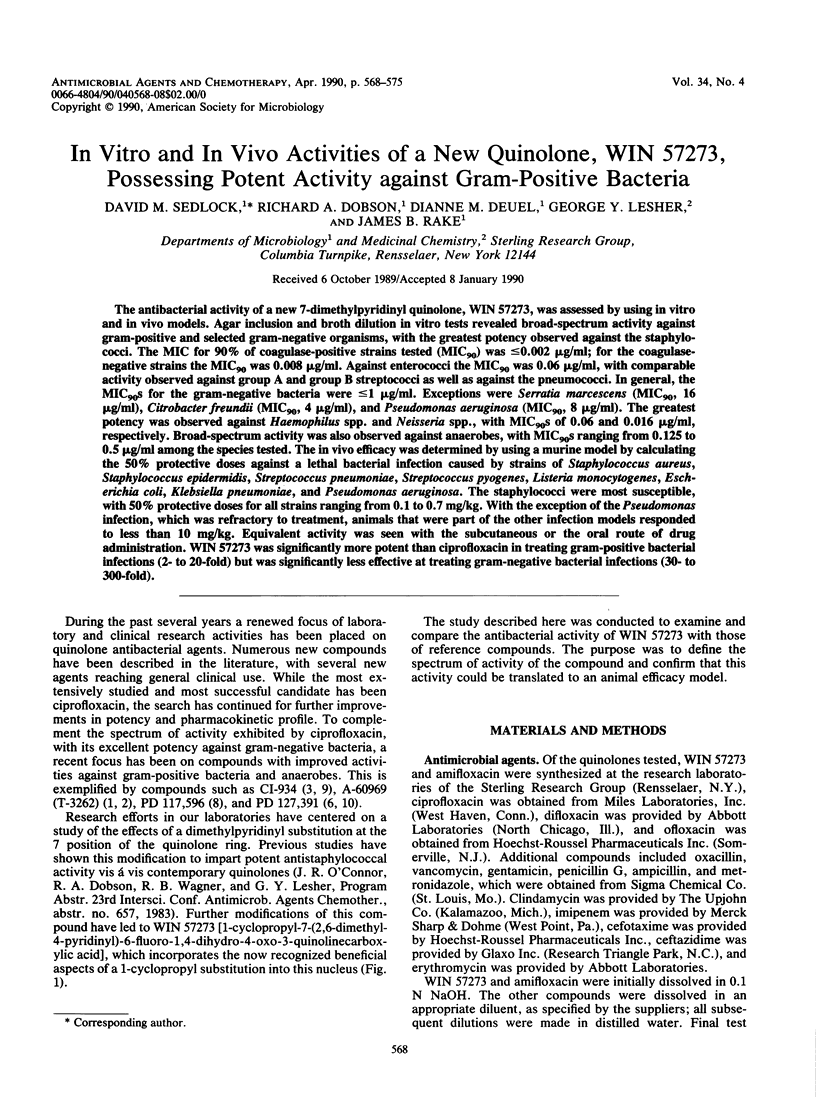
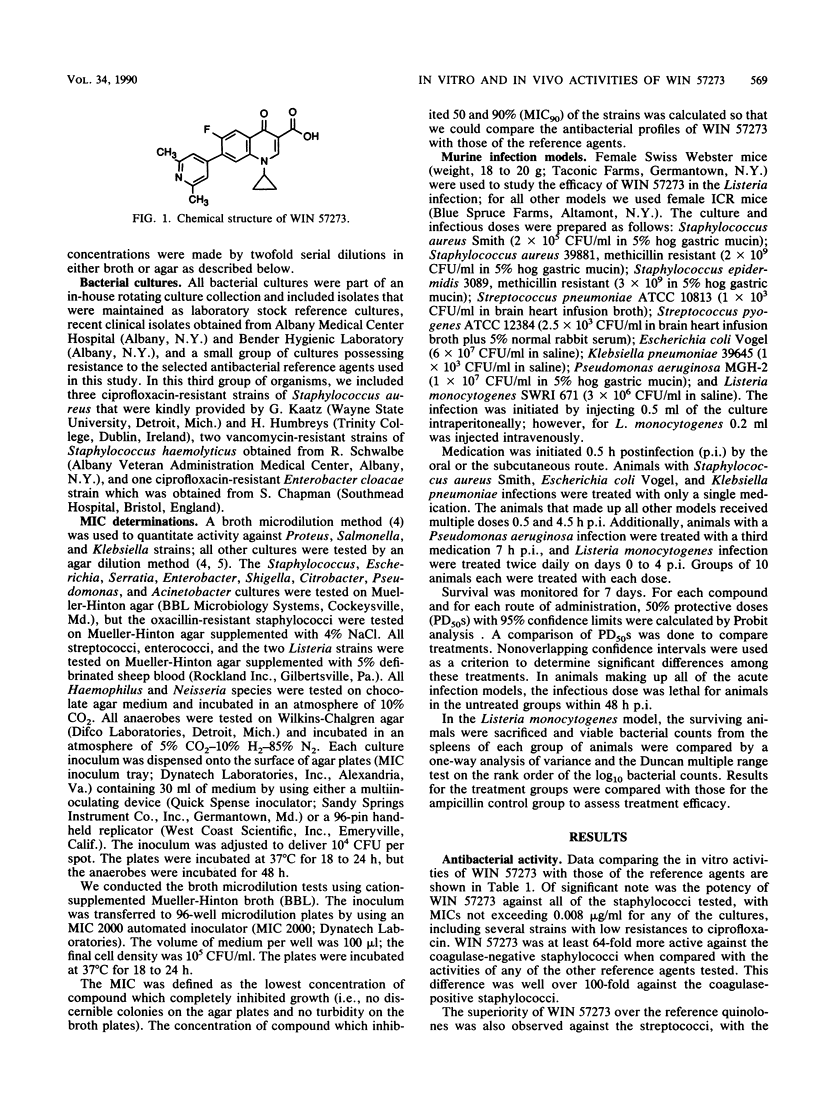
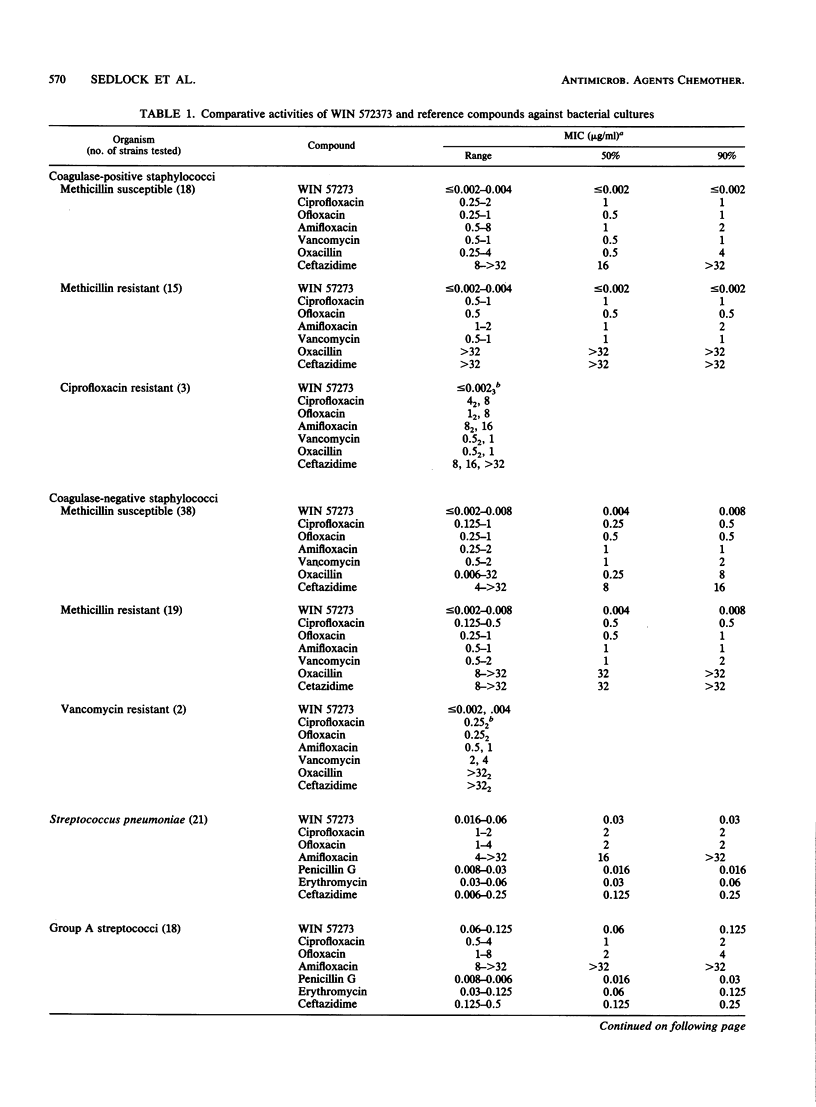
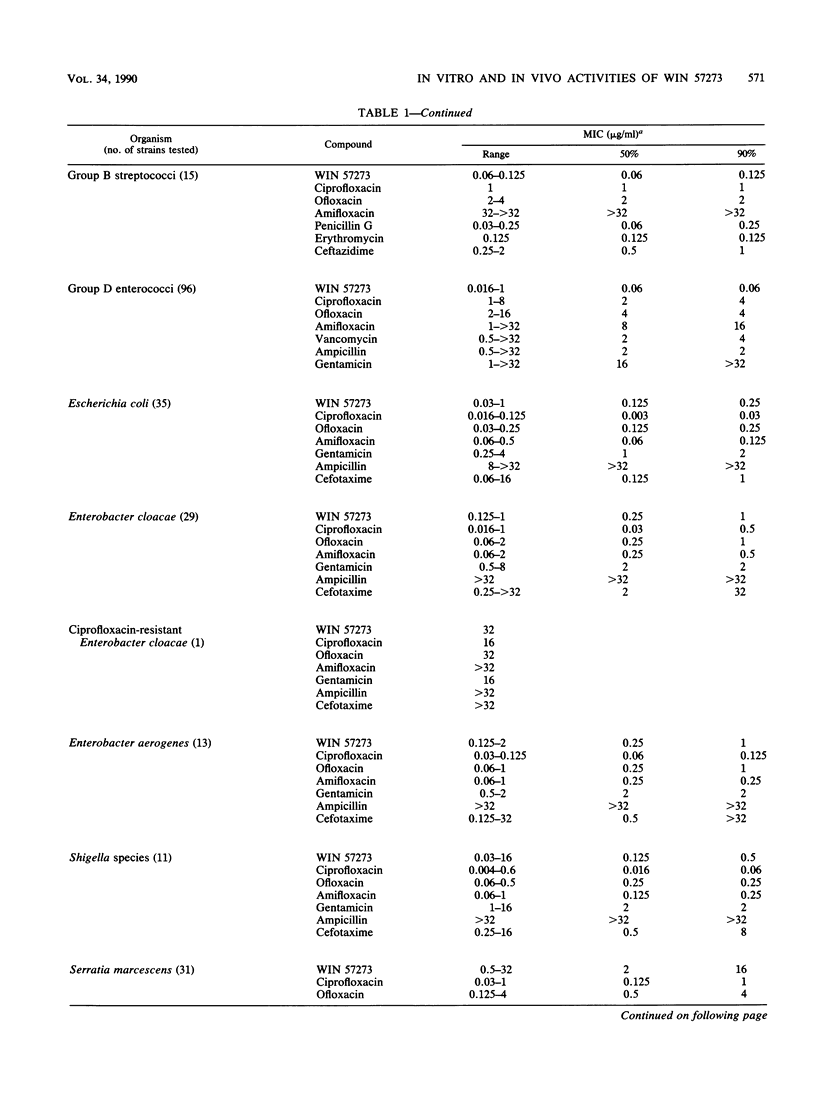
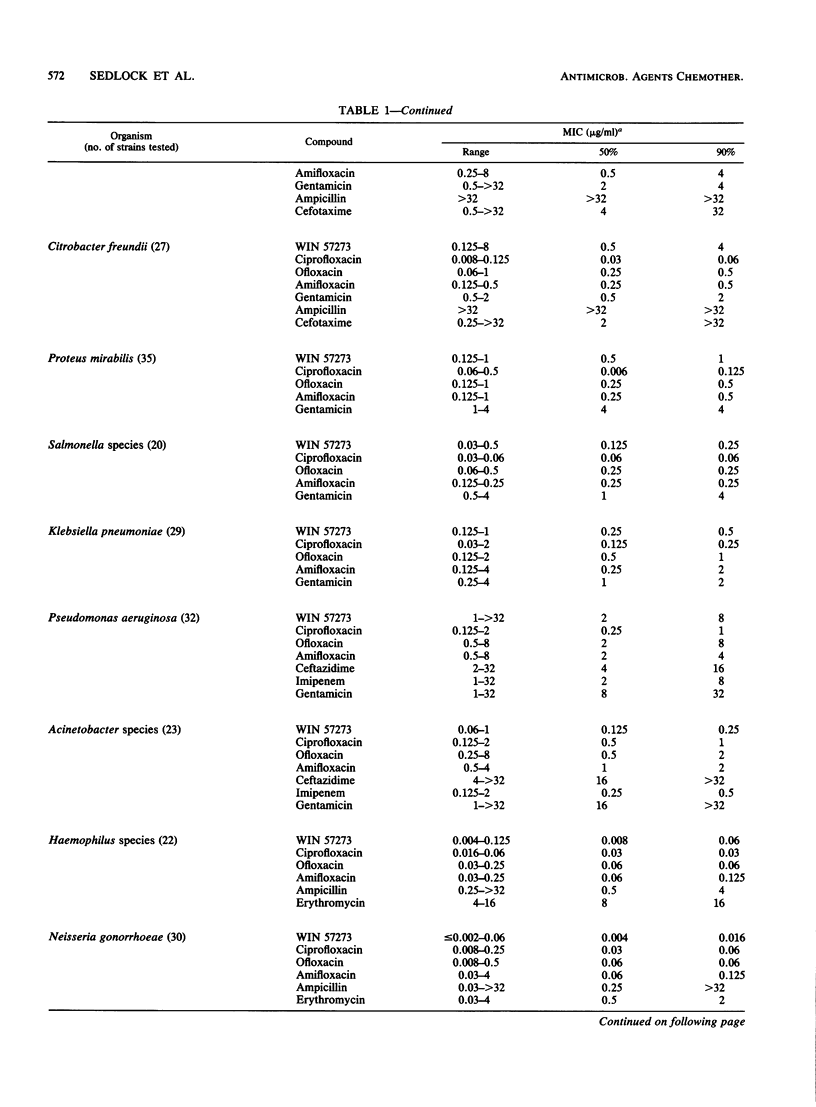
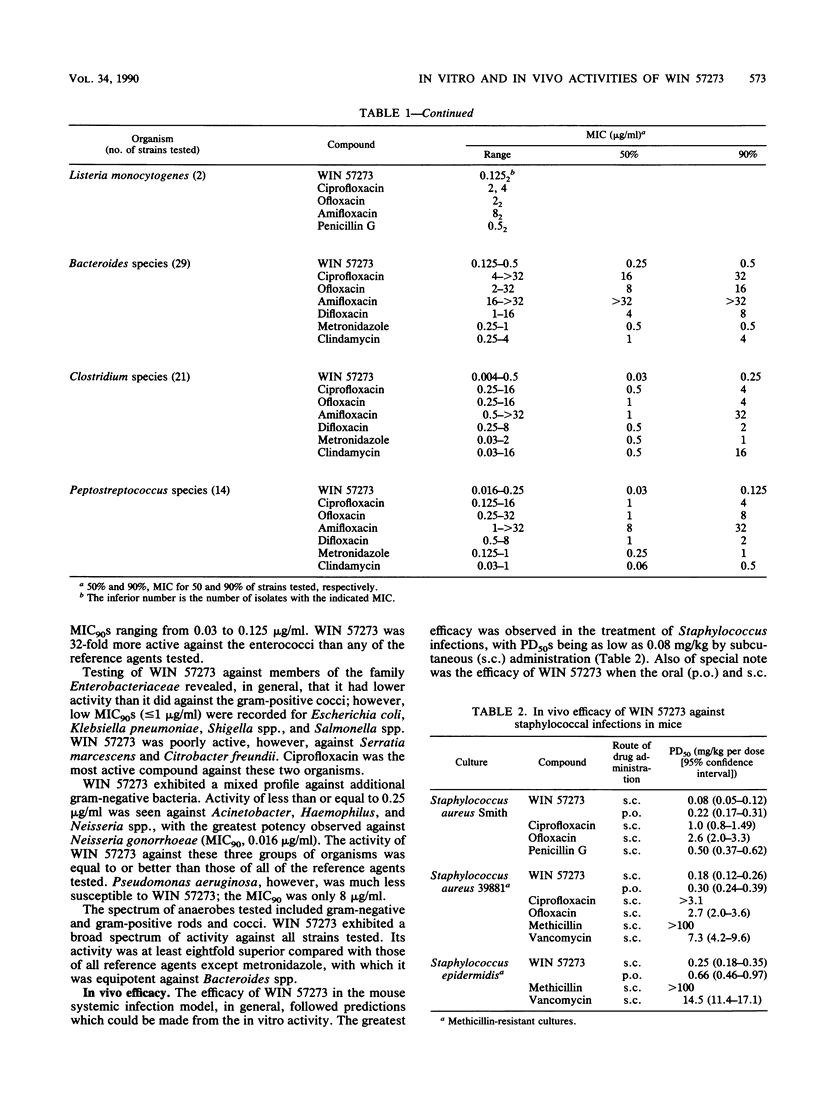
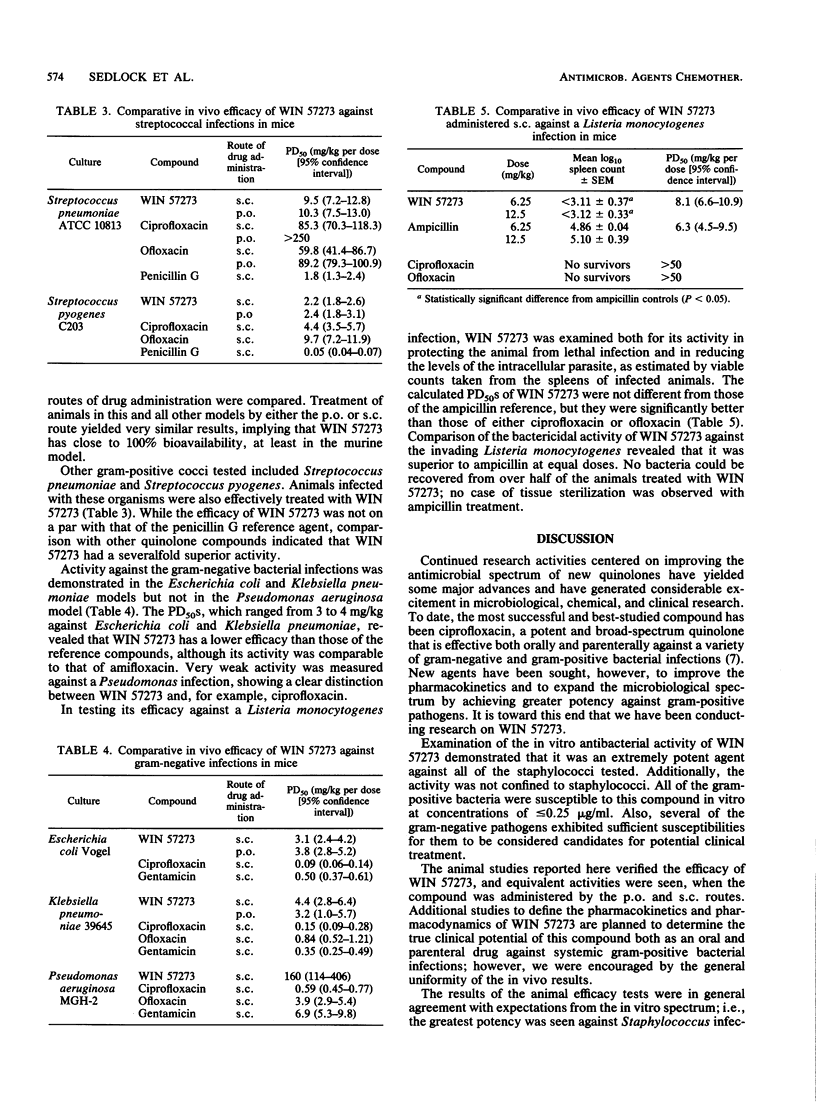
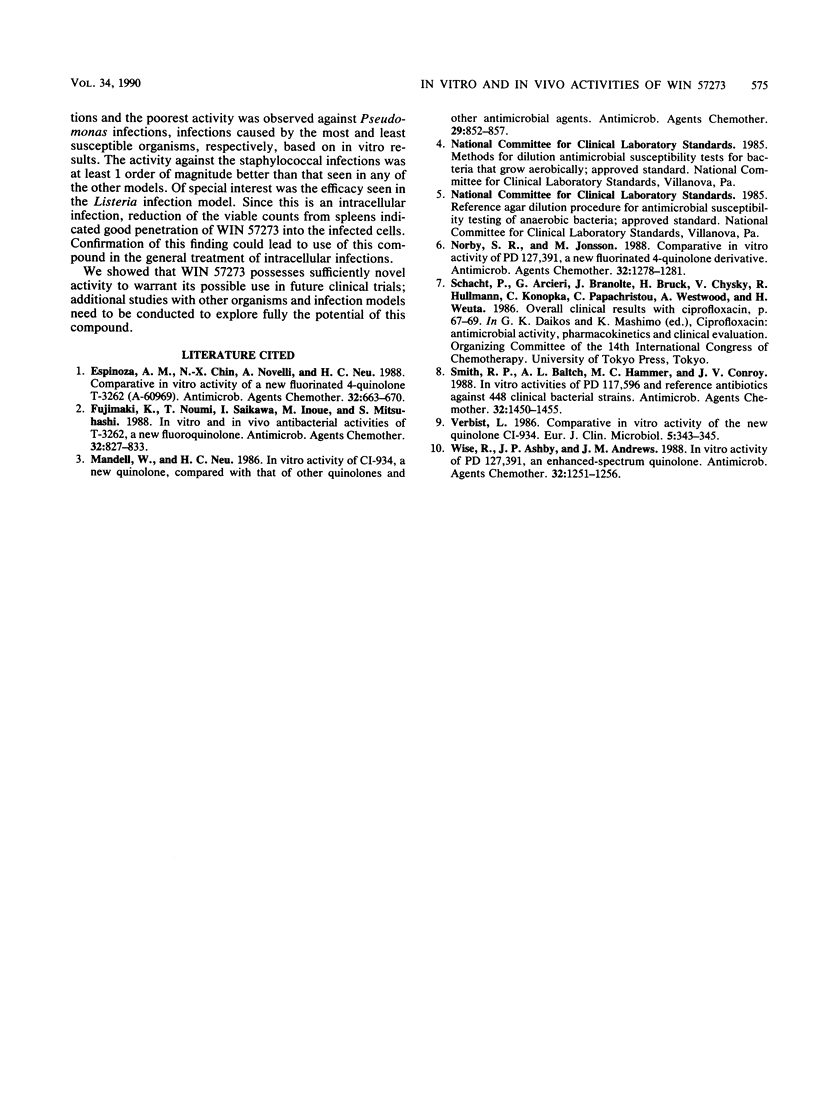
Selected References
These references are in PubMed. This may not be the complete list of references from this article.
- Espinoza A. M., Chin N. X., Novelli A., Neu H. C. Comparative in vitro activity of a new fluorinated 4-quinolone, T-3262 (A-60969). Antimicrob Agents Chemother. 1988 May;32(5):663–670. doi: 10.1128/aac.32.5.663. [DOI] [PMC free article] [PubMed] [Google Scholar]
- Fujimaki K., Noumi T., Saikawa I., Inoue M., Mitsuhashi S. In vitro and in vivo antibacterial activities of T-3262, a new fluoroquinolone. Antimicrob Agents Chemother. 1988 Jun;32(6):827–833. doi: 10.1128/aac.32.6.827. [DOI] [PMC free article] [PubMed] [Google Scholar]
- Mandell W., Neu H. C. In vitro activity of CI-934, a new quinolone, compared with that of other quinolones and other antimicrobial agents. Antimicrob Agents Chemother. 1986 May;29(5):852–857. doi: 10.1128/aac.29.5.852. [DOI] [PMC free article] [PubMed] [Google Scholar]
- Norrby S. R., Jonsson M. Comparative in vitro activity of PD 127,391, a new fluorinated 4-quinolone derivative. Antimicrob Agents Chemother. 1988 Aug;32(8):1278–1281. doi: 10.1128/aac.32.8.1278. [DOI] [PMC free article] [PubMed] [Google Scholar]
- Smith R. P., Baltch A. L., Hammer M. C., Conroy J. V. In vitro activities of PD 117,596 and reference antibiotics against 448 clinical bacterial strains. Antimicrob Agents Chemother. 1988 Sep;32(9):1450–1455. doi: 10.1128/aac.32.9.1450. [DOI] [PMC free article] [PubMed] [Google Scholar]
- Verbist L. Comparative in vitro activity of the new quinolone CI-934. Eur J Clin Microbiol. 1986 Jun;5(3):343–345. doi: 10.1007/BF02017794. [DOI] [PubMed] [Google Scholar]
- Wise R., Ashby J. P., Andrews J. M. In vitro activity of PD 127,391, an enhanced-spectrum quinolone. Antimicrob Agents Chemother. 1988 Aug;32(8):1251–1256. doi: 10.1128/aac.32.8.1251. [DOI] [PMC free article] [PubMed] [Google Scholar]


